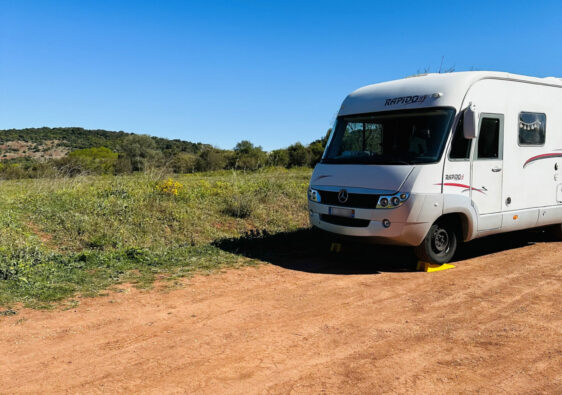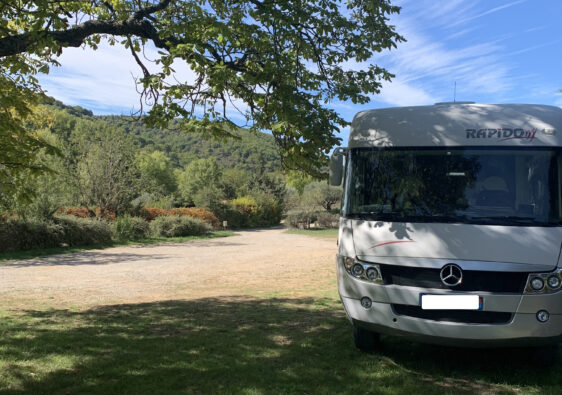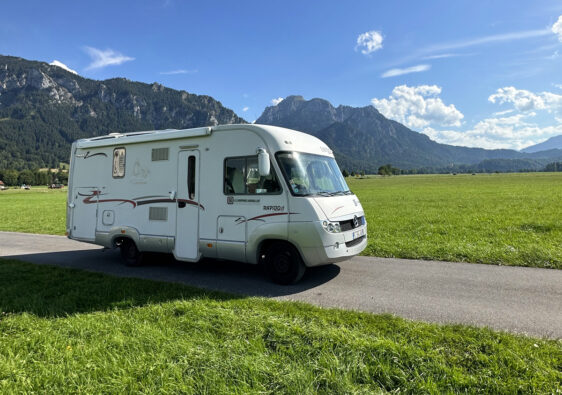Dry toilets are becoming increasingly popular among owners of camping cars and converted vans. They represent an ecological and practical solution to meet an essential need on the road: having access to a toilet! In this article, we’ll address all the questions we had before installing ours in our camper van. You’ll discover the advantages of dry toilets compared to chemical toilets, how they work, and our tips for their use and maintenance.
Why install dry toilets for your motorhome or van?
Comparison between dry toilets and chemical toilets
Chemical toilets are traditionally installed in camping cars. However, they require the use of chemicals to dissolve waste and neutralize odors. Using them means you need to regularly stop during your journey to empty the black water into service areas.
Dry toilets, specifically those with a separator, which we believe are the best choice, operate without water or chemicals. They are based on composting principles and separate urine from solid waste using a separator like this:

Where to dispose of the contents of dry toilets?
To dispose of toilet waste, several options are available. The first is recycling the toilet waste, but access to composting facilities is not always straightforward, and areas are not always equipped with collection systems.
If this isn’t possible, another option is to dispose of the waste with household garbage, similar to disposing of used cat litter or baby diapers, for instance. Note that this is technically prohibited in France under health regulations, even when properly sealed in a bag.
Finally, there’s the option of burial, using biodegradable bags and toilet paper.
Advantages of dry toilets: ecological and practical
Opting for dry toilets offers several advantages:
- No water consumption: unlike conventional toilets that require a significant amount of water for flushing, dry toilets do not use any water. This allows for greater water autonomy for activities like dishwashing and showering.
- No chemicals: they avoid the use of environmentally harmful chemicals.
- Waste reduction: organic matter transforms into compost, which can be used to enrich soil.
- Increased autonomy: less need to regularly empty black water tanks at specific stations. No more constraints of regularly finding a service area to use the toilet again, offering greater freedom in travel!
How do dry toilets work?
Types of dry toilets
There are several types of dry toilets suitable for campers or vans, primarily two types are commonly found:
- Conventional litter-based toilets: These use a vegetal litter to cover solid waste, which is later transformed into compost.
- Integrated separation system toilets: Similar to conventional dry toilets, but urine and solid waste are separated using a bowl with a separator.
Basic principle of separation dry toilets
The functioning of dry toilets revolves around separating urine from solid waste. Solid waste is covered with sawdust, wood shavings, or other organic materials to absorb moisture and neutralize odors. Urine, on the other hand, is collected in a separate reservoir.
Why separate urine in dry toilets?
Separating urine in dry toilets offers several advantages:
- Reduced moisture: Urine is primarily composed of water. By separating it from solid waste, the moisture content in the solid waste compartment is significantly reduced. This facilitates the composting process and decreases odors.
- Odor reduction: Ammonia, produced as urine decomposes, is a major contributor to unpleasant odors in toilets. By separating urine, these odors can be greatly minimized.
- Waste volume reduction: Separating urine reduces the total volume of waste to manage. This not only aids in composting but also decreases how often the solid waste compartment needs to be emptied.
In summary, separating urine in dry toilets reduces odors and increases autonomy!
Installing dry toilets in a motorhome
Available options for installation
Installing dry toilets in a motorhome can be done in several ways:
- Either by replacing existing chemical toilets with dry toilets, for example, opting for a complete kit including the bowl, container, and necessary accessories for installation.
- Or by choosing to install dry toilets during the conversion of a van or the purchase of a new motorhome.
What are the brands and models of dry toilets?
There are several brands of urine-separating dry toilets, with the two main ones being TROBOLO and Trelino. These brands offer kits for those interested in building their own dry toilets, providing everything needed to create the toilets of your dreams 🙂
- TROBOLO is a German brand specializing in compostable toilets. All TROBOLO products are developed in Germany and manufactured in the EU. Link to the official TROBOLO website.
- Trelino is a brand that also offers durable and environmentally friendly compostable toilet solutions. We opted for a kit from Trelino because it better met our compactness requirements. For their complete range, you can visit their official website.
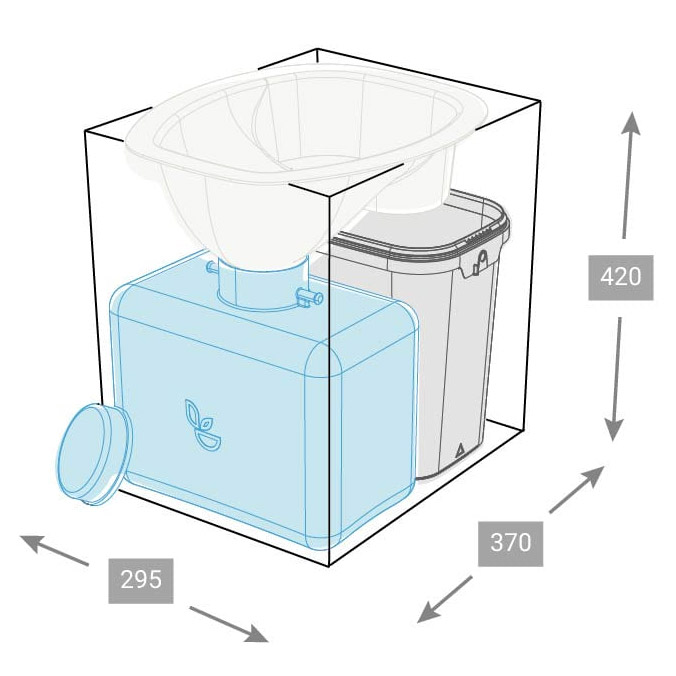
How to choose the right dry toilets for your van?
Your choice will largely depend on your autonomy needs and space constraints for integrating these toilets. You have two main options:
- Opt for pre-assembled models ready for use: There are various types available (compact, portable, etc.) with options like ventilation systems, which you can explore on manufacturers’ websites. All dimensions are provided to guide you in making your choice.
- Build them yourself: This is actually the option we chose, and we’ll explain how to do it shortly.
How to build your own dry toilets?
Several brands offer kits for creating your own dry toilets, making it easier to embark on the construction of toilets that fit perfectly into your vehicle’s configuration.
Making your dry toilets involves constructing the casing that will hold your waste container, or containers if you choose a separation toilet system.
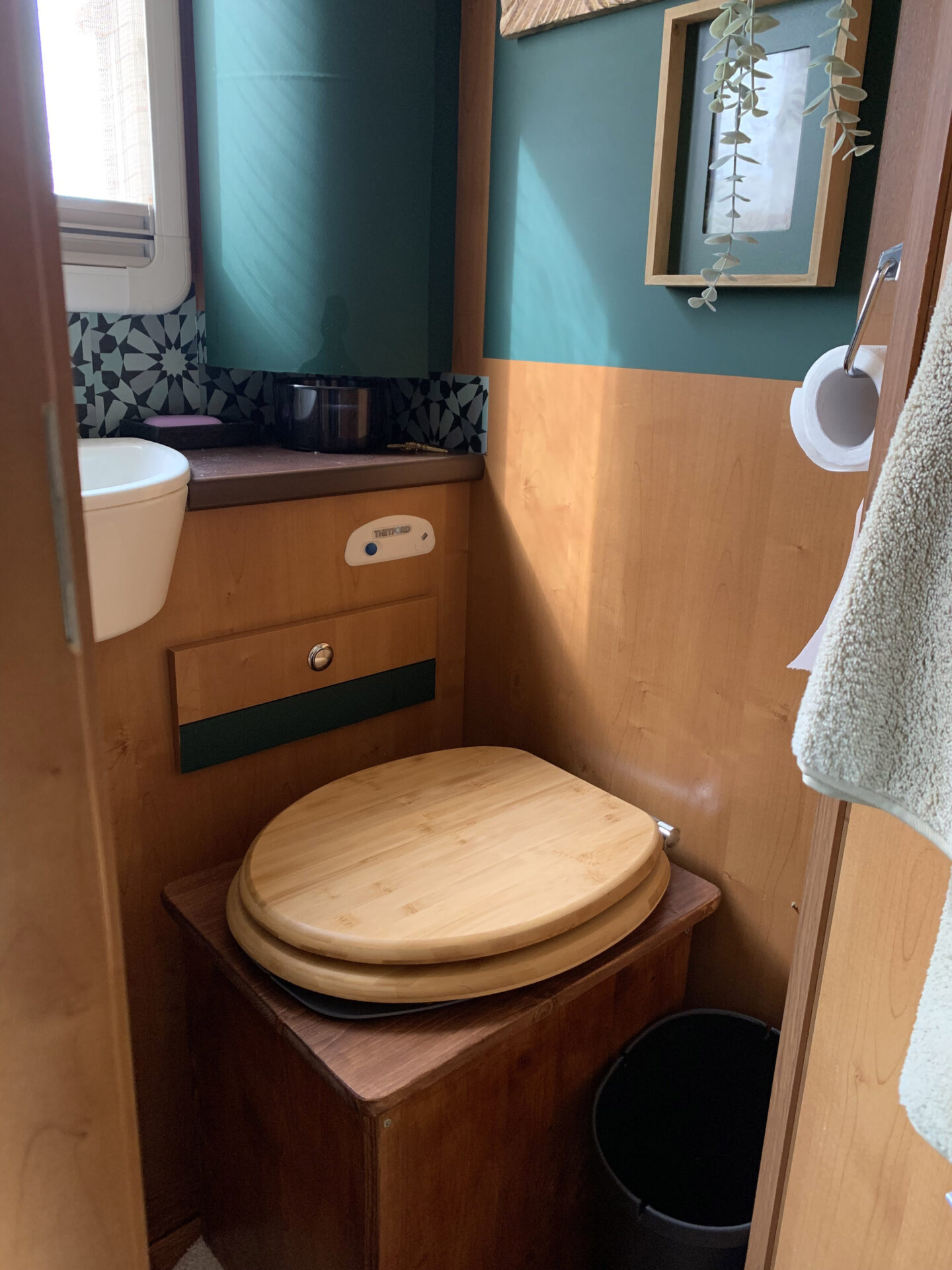
There are several phases to follow, in order:
Determining the dimensions of your dry toilets
This is the first and most crucial step! Take accurate measurements inside your vehicle, especially considering floor space if you’re replacing chemical toilets. Traditional chemical toilets have a shape that minimizes floor space, whereas dry toilets are typically bulkier, resembling a large wooden cube. Therefore, they occupy more floor space.
Quick tip: Consider the thickness of the wood you’ll use when establishing your dimensions.
Purchasing necessary materials and assembly accessories
Once dimensions are determined, you’ll need to purchase materials for assembling your toilets. We recommend using sufficiently thick wood for rigidity. For the bowl, you can choose a standard commercial option.
Constructing your dry toilets
Kits usually come with a scale guide for cutting the urine separator to the correct dimensions. Cut your lid, different sides, and optionally, the bottom if desired. Then assemble the parts! As for finishing, you can decide whether to leave the wood raw, paint it, or apply a wood stain.
Our advice: Apply at least a wood stain to protect the wood, especially in environments like camper vans where toilets are near water sources.

Installation of dry toilets in your camper van, van, or converted van
Once your wooden casing is built, the next step is to place inside the kit elements: the urine container, the solid waste container, and the separator. Prepare the solid waste container with a bag and wood chips, and your toilets are ready to be used.
Can you convert the chemical toilets of your camper van into traditional dry toilets?
This is a question many people ask, but it’s not suitable at all! Traditional toilets do not have a configuration that allows for installing a sufficiently large container, nor is it possible to install a urine separator.
Can you reinstall the chemical toilets of your camper van?
Most camper van configurations that use dry toilets involve removing the chemical toilets from the vehicle and replacing them with dry toilets.
Certainly, you can reinstall the chemical toilets, for example, when selling the vehicle, but you must have removed them carefully beforehand. Here’s how you can do it:
- Start by disconnecting the water supply and electrical connection. Remember to plug the water supply before restoring the pump operation!
- Unscrew the toilet block: it’s straightforward, just a lot of screws to remove.
Next, you’ll need to seal the hole left by removing the chemical toilets. For instance, you could create a small access hatch that allows you to store your wood chips where the cassette used to be located!
Daily use of dry toilets
To use dry toilets, you simply need sawdust or wood shavings to cover solid waste.
We recommend using rabbit bedding sawdust, which is readily available in most stores. It’s highly absorbent and eliminates any odor concerns.
How to maintain and clean dry toilets
Maintaining dry toilets is easy and quick:
- Change the vegetal litter frequently in the container dedicated to solid waste.
- Regularly clean the urine tank with an appropriate eco-friendly product.
- Use biodegradable toilet paper to facilitate composting.
Waste treatment options
The waste from dry toilets can be composted in several ways:
- In a home compost bin if you have a garden.
- On a dedicated composting site for camper vans, which are still relatively few but growing in availability.
- Burying in nature, following etiquette and ecological guidelines!
FAQ
The frequency of emptying will depend on several factors: how often they are used, the size of the containers, the amount of sawdust used, etc. Generally, you can expect to empty them every 3 to 7 days. A standard camper van cassette toilet’s autonomy can be reduced by 50% compared to dry toilets.
It’s recommended to use biodegradable toilet paper that decomposes quickly and easily. It should be unbleached and made from recycled materials!
Regularly empty the urine container! This is the source of any odors, so it’s important to keep it from filling up.
As discussed in this article, dry toilets offer numerous advantages and greater autonomy due to easier maintenance. They are highly recommended.
Since dry toilets do not use any chemical products, they are indeed more environmentally friendly than chemical toilets!
Dry toilets are available at various price points, from entry-level to premium. The most economical option is to build them yourself using a kit that includes a separator and containers.
Absolutely! There’s no need to find a dumping station regularly, so you can travel to areas that may not offer services for camper vans.
You can easily go several days, depending on the number of users and the size of the toilet setup. Generally, they offer 30% to 50% more autonomy compared to chemical toilets.



